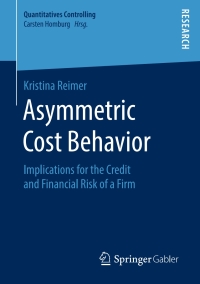Question
1.Based on the information in the table, assume U.S. interest rate is 0.25%, answer the following questions: Currency Spot rate 90-days forward rate British Pound
1.Based on the information in the table, assume U.S. interest rate is 0.25%, answer the following questions:
Currency
Spot rate
90-days forward rate
British Pound
1.6775 $/
1.6790 $/
Japanese Yen
0.0098 $/
0.0095 $/
European Euro
1.3411 $/
$/
a.What is the spot exchange rate of pound/Yen (/)?
b.Based on CIP, what's the European interest rate?
c.If Japanese interest rate is 3.72%, is there any arbitrage opportunity?
d.Assume interest rate in Britain is 0.35%. Based on UIP, what's the expected exchange rate between dollar and pound ($/) 90 days later?
2.Consider an MNC has two choices on investment. One of them is to invest the project in Taiwan only. The other is to invest 75% funds in Taiwan and 25% in Singapore. Both investments give the same return. The standard deviation of exchange movements is 7% for Taiwan dollars and 5% for Singapore dollars. The correlation coefficient between movements in the value of the Taiwan dollar and the Singapore dollar is .7. Based on this information, which investment should the MNC chose? Show the calculations. (10 points)
3.Louisville Co. is a U.S. firm considering a project in Austria which it has an initial cash outlay of $6 million. Louisville will accept the project only if it can satisfy its required rate of return of 15 percent. The project would definitely generate 2 million euros in one year from sales to a large corporate customer in Austria. In addition, it also expects to receive 4 million euros in one year from sales to other minor customers in Austria. Louisville's best guess is that the euro's spot rate will be $1.26 in one year. Today, the spot rate of the euro is $1.40, while the one-year forward rate of the euro is $1.34. If Louisville accepts the project, it would hedge the receivables resulting from sales to the large corporate customer, and none of the expected receivables due to expected sales to other minor customers. (15 points)
a.Estimate the net present value (NPV) of the project.
b.Assume that Louisville considers alternative financing for the project, in which it would use $4 million cash, and the remaining initial outlay would come from borrowing euros. In this case, it would need 1,500,000 euros to repay the loan (principal plus interest) at the end of one year. Assume no tax effects due to this alternative financing. Estimate the NPV of the project under these conditions.
c.Do you think the Louisville's exposure to exchange rate risk due to the project if it uses the alternative financing (explained in part b) is higher, lower, or the same as if it has an initial cash outlay of $6 million (and does not borrow any funds)? Briefly explain.
4.Cerra Co. expects to receive 5 million euros and 5 million pounds as a result of selling goods to the Europe. (15 points)
a.Based on the following information, estimates the standard deviation of monthly percentage changes in the exchange rate of the portfolio (euros and pounds) based on the data in the last 7 months.
Month
Euro
Pound
1
$1.13
$1.27
2
$1.12
$1.25
3
$1.11
$1.22
4
$1.10
$1.24
5
$1.11
$1.27
6
$1.13
$1.29
7
$1.11
$1.31
b.Assume that these percentage changes are normally distributed. Use the value-at-risk (VAR) method based on a 95% confidence level. What is the maximum one-month loss if the expected percentage change of the portfolio is 0.1%?
Step by Step Solution
There are 3 Steps involved in it
Step: 1

Get Instant Access to Expert-Tailored Solutions
See step-by-step solutions with expert insights and AI powered tools for academic success
Step: 2

Step: 3

Ace Your Homework with AI
Get the answers you need in no time with our AI-driven, step-by-step assistance
Get Started


